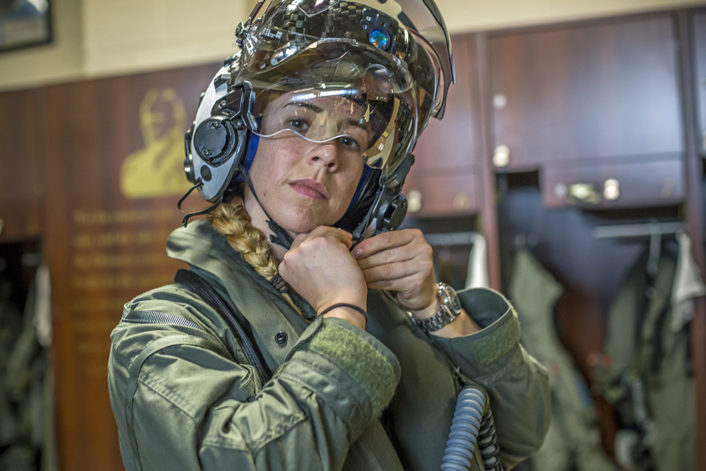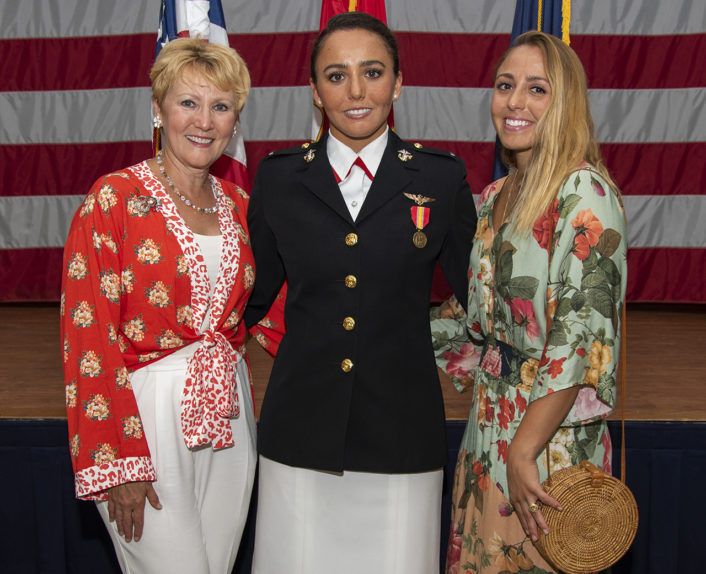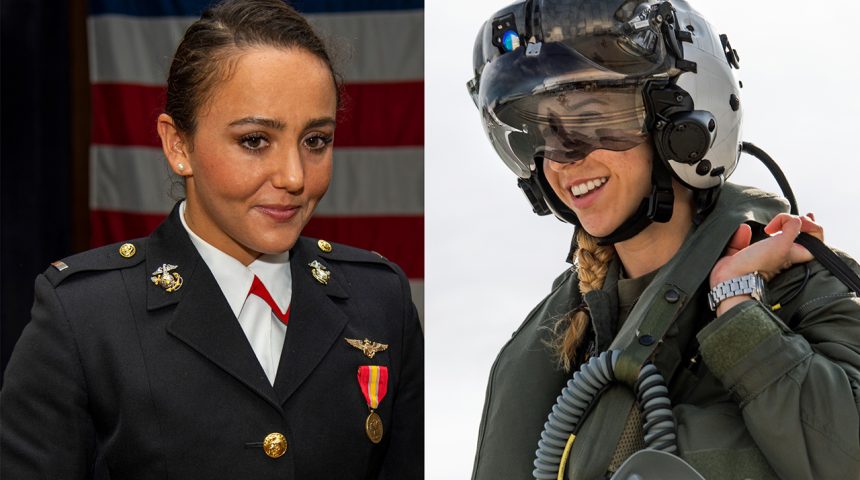Marine 1st Lt. Catherine Stark and Capt. Anneliese Satz make history.
U.S. Marine Corps Capt. Anneliese Satz made history on June 27, 2019 when she became the first female USMC fighter pilot to complete the F-35B Lighting II training syllabus.
Following her completion of training in the F-35B at Marine Corps Air Station Beaufort, South Carolina, Capt. Satz attended the grueling SERE school (Survival, Evasion, Resistance, Escape) for training combat pilots how to survive and escape if they are forced down over enemy areas.

Capt. Satz began training in Beaufort, South Carolina, with Marine Fighter Attack Training Squadron 501 in July 2018. In October of last year, after rigorous academic and simulator qualifications for the F-35, Capt. Satz made her first solo flight in a USMC F-35 according to the Marine Corps. Since there are no two-seat trainer variants of the F-35 in any version, a pilot’s first actual flight in the aircraft is done by themselves, adding to the level of proficiency required in the aircraft before the first actual flight outside the simulator.

Capt. Satz joins USMC 1st Lt. Catherine Stark as a “first generation-fifth gen” pilot in the F-35 Joint Strike Fighter. Unlike legacy fighter pilots with time and qualifications in older, 4th generation fighter aircraft, the pair of new Marine pilots advanced through their college educations and then primary and advanced flight schools directly into the 5th generation F-35 Joint Strike Fighter. Most previous F-35 pilots in the USAF, U.S. Navy and the USMC began their careers as tactical pilots in other aircraft such as the F/A-18 or other aircraft that previously existed in the U.S. arsenal.

U.S. Marine 1st Lt. Catherine Stark earned her wings as a Marine Corps pilot with Training Air Wing 2, Naval Air Station Kingsville, in Kleburg, Texas. She graduated from the pilot training pipeline on Aug. 2, 2019 and will begin training to fly the F-35C Lightning II, the same wide-winged variant of the Joint Strike Fighter.
1st Lt. Stark, a Marine currently attached to the “Fighting Redhawks” of Training Squadron (VT) 21, has been in flight training since early 2016 according to the U.S. Navy. She completed training as a Marine Corps officer at Marine Corps Base Quantico, Virginia, and reported for initial flight training at NAS Pensacola, Florida. After more than two years of flight training in the T-6B Texan II primary flight training aircraft and the T-45C Goshawk advanced jet training aircraft, she has been selected to be the first female Marine to fly the unique F-35C carrier-specific variant.
“It has been a long process to get to where I am today,” Stark said in an official U.S. Navy release. “During my time in flight training, I have met so many hardworking Marine and Navy pilots who have shared my experience. Every single one of them has worked hard to earn the Wings of Gold we pinned on.”
During her time in the advanced jet phase of flight training, 1st Lt. Stark distinguished herself by scoring top scores on graded events such as Basic Fighter Maneuvering, Tactical Formations, and Section Engaged Maneuvering. Her overall Navy Standard Score through flight training made her stand out from other pilots in training, a significant factor in her selection to the new F-35C program.
“I am excited to start training on my assigned fleet aircraft,” 1st Lt. Stark said. “Flying the F-35 has been a goal of mine since I started training, but I didn’t know that I would have the opportunity to fly the F-35C. It’s a humbling experience and I am eager to learn from the pilots who have already spent time flying such an advanced aircraft.”
1st Lt. Stark will begin her training in the F-35C with the “Rough Raiders” of VFA-125 Fleet Replacement Squadron (FRS). The FRS takes pilots who have recently completed training and transitions them to their assigned fleet aircraft.
Capt. Satz and 1st Lt. Stark join an elite group of only about 86 USMC pilots as of February 2019 who fly the F-35B STOVL variant of the F-35 Joint Strike Fighter and the wide-winged F-35C. The F-35B is the version of the Lightning II that can take off and land vertically and in very short distances using a novel vectored-thrust system unique to the “B” variant . The USMC also operates the wide-winged, heavy landing gear-equipped F-35C carrier variant mainly used by the U.S. Navy. The Marines eventually hope to have 263 pilots qualified to fly their F-35B and F-35C combat aircraft.









